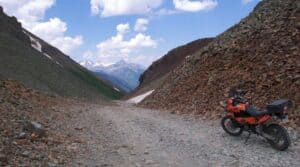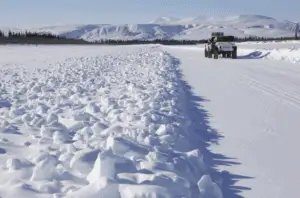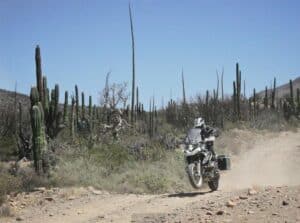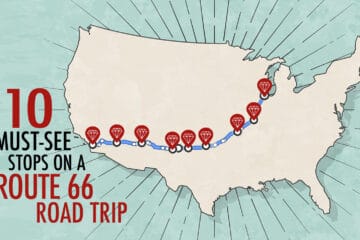Article by Ariane Triebswetter
What is overlanding?
Did you ever hear of overlanding? No?
Overlanding is a self-reliant method of traveling by land, using multiple forms of vehicles to go to remote destinations, and where the journey matters more than the destination. Typically, preferred method of accommodation is camping, either with a tent or a camper van.
In the late 80s and 90s, overlanding became increasingly popular, especially amongst gap year students. They would explore multiple countries, using all kinds of transportation, relying on themselves, enjoying the journey and savouring getting lost.
Nowadays, all kinds of people from all different paths of life enjoy overlanding. For example, a lot of youtubers chose this method of travel, sometimes even living full time in a camper van, travelling whenever they desire.
It is part of an adventure and a slower life mode, where you take time to appreciate your surroundings, the beauty of every road you cross. There are even organised tours, if that’s your thing, or you can travel alone or with friends or family.
It is very different to tourists travelling to a destination, and practically don’t see where they are visiting, preferring to stay in hotels, for example.
In fact, the overlanding industry continuously grew this last decade, especially between 2015 and 2017. It remains a relatively new phenomenon in the United States, whilst in Europe it has been there for almost a century.
Methods of travel
So, what vehicles can you use whilst overlanding?
First of all, your mindset is the most important motor you will need. You have to be prepared for flat tires, going days without a shower, and your meals getting slimmer then what you are used to.
But it’s all worth it if you have a real sense of adventure.
You can use trains, buses, 4×4, hitchhiking, camping cars, trucks, cars, bicycles, motorcycles, custom-built vehicles, and anything that works off-road, really.

What do you need for overlanding?
Whilst overlanding, your vehicle is, of course, essential, but don’t forget camping equipment, if that is your preferred method. A tent can go a long way and is easy to transport, as are a GPS, a portable light, a pocket knife, a camp stove, portable showers, and a lighter.
Take some tools and extra gas with you, just in case something in your vehicle breaks, and you are not anywhere near a service station.
If you have the space, pack food. Especially food that will conserve a lot time, such as tins.
And a first aid kit is always beneficial!

Risks of overlanding
With all this freedom and adventure, comes some responsibility.
Overlanding can be viewed as being unsafe. But then, there is always a risk while travelling, so you have to take responsibility for your journeys. There will always be the dangers of Nature and some people will always want to take advantage of you.
But that’s not the worse.
Probably the biggest downside of overlanding is the environmental impact.
To reduce this negative impact, make sure you go to places you are allowed to go to, and be mindful of your environment. Don’t leave any trash behind, and leave your camping site like you found it.
You should be mindful that camping laws vary from state to state and country to country. So, inform yourself before you stay somewhere, to avoid any problems with the law.
This will just make trips pleasant for everybody and make you appreciate the beautiful open surroundings.

Overlanding in North America
Now that you know more about overlanding, let’s talk about overlanding routes in North America. These routes are in Mexico, the United Stated, and Canada.
No need to stick to paved roads, there are plenty of amazing trails that will surprise you.
Here is a list of a few places, whether you never did overlanding before or you are an expert:
- Valley of the Gods Road, Utah
This dirt road is the so called “beginners road”. So, if this your first overlanding trip, this is a great place to start! There are loads of camping facilities and wide open spaces for you to enjoy Nature at its fullest.
- Baja, Mexico
This is for the slightly more experienced adventurers. There are campsites and beaches at the end of this trail. Be careful, route-finding might be difficult, and there aren’t too many fuel supplies available. But you won’t regret the journey and the stunning desert landscape.
- Mojave Road, California
This is an historic route, that was used by Native Americans and then settlers. It is of an intermediate level, so if you have done some overlanding before and enjoy history, this is the route for you. Plan your drive during Spring or Fall, to avoid extreme temperatures.
- Dempster Highway, Canada
This runs between Yukon and North-western territories. The route in itself is not that arduous, mainly gravel and dirt, but you will need a good plan and GPS before you leave. You will cross the Continental Divide, Artic strips and mountains, experiencing a variety of landscapes.
- Transamerica Trail, USA
This trail goes from Virginia to Oregon and is for the experienced overlander. It is 92 percent dirt roads and 5,000 miles. It crosses the US and you will experience a variety of landscapes, whilst enjoying the wide open spaces. An overland unit might come in handy, which has preloaded maps and will help you navigate with ease.
Here are some other useful navigation tools: overlandexpo.com
Conclusion
Overlanding is a great way to travel. You see the country and you are self-dependent. With one vehicle, you can see gems you would have never noticed if you had traveled by plane.
It can actually have a better environmental impact than a plane, and if you are respectful of Nature, Nature will awe you.
The sense of adventure is huge and North America has a plethora of landscapes to offer, whether you prefer the desert or the mountains. There is a path for everybody.
You can meet with other fellow overlanders and bond over this passion. You can travel alone or with peers.
So, what are you waiting for?
Pack up and get on your preferred vehicle, and go see the world!
Safe Travels and Enjoy!!
**Please share this post. Thank you!!




0 Comments